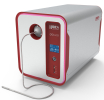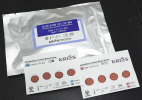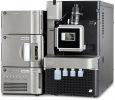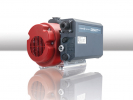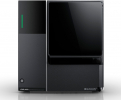Bruker Daltonics' new Chemical Analysis business announced the release of MS Workstation 7, the next generation software package for the newly acquired 3x0 series GC triple-quadrupole (GC-QQQ) mass spectrometers. MS Workstation 7 features Scheduled Multiple-Reaction Monitoring (s-MRM), which facilitates method development, maintenance and data reduction tasks for challenging multi-component methods.
Multi-residue analyses are often challenging due to the low levels and diversity of targeted analytes in complex sample matrices. Regardless of the application area, laboratories are typically faced with the challenge of bolstering the number of compounds identified and measured over shorter and shorter analysis times.
Traditionally, triple-quadrupole mass spectrometers have been used for these targeted, multiplexed analyses due to the excellent selectivity, large dynamic range, high sensitivity and low limits of quantitation obtained with multiple reaction monitoring (MRM) in triple-quadrupole MS instruments. However, the number of compounds that can be effectively monitored per chromatographic run by a triple quadrupole MS can be limited by the cycle time of the instrument, the complexity of the sample matrix and the chromatographic peak widths of the analytes, particularly in fast GC separations.
To answer the challenge posed by complex, multi-residue analytical methods, Bruker has developed the s-MRM approach that is available now in MS Workstation 7. This advanced s-MRM capability decreases the number of concurrent MRM transitions, allowing MRMs to be monitored only around their expected retention times. MS Workstation 7 allows instrument cycle and dwell times to be optimized to deliver highest sensitivity on accurate and reproducible results. The s-MRM approach facilitates the monitoring of increased numbers of MRM transitions during an analysis, and can meet the rigours of current fast, multi-residue GC methods, while maintaining high data quality.
Collin D'Silva, President of the newly-formed Bruker Chemical Analysis Division, stated: "Before our recent acquisition of the former Varian Inc. GC, GC-QQQ-MS and ICP-MS products, we made sure that they were high performance, high quality instruments that provide value in the marketplace. Bruker is committed to accelerating research and development, as well as applications development and validation, so that our chemical analysis products become even more valuable resources for our customers."


